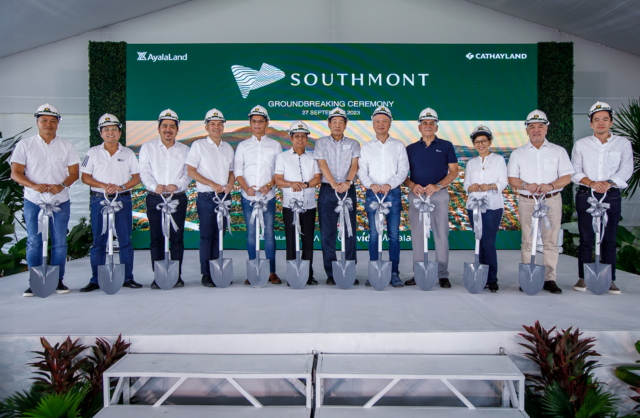In his recent lecture as former Director General of the National Economic and Development Authority (NEDA), UP Professor Emeritus Dr. Dante B Canlas argued that to help avoid a low middle-income trap, three policy approaches should be given priority: short-run stabilization measures, health measures, and affordable energy. The right priorities to these key policies of competing importance and consequences should be established.
Needless to say, priorities should be implemented preferably to the letter.
But unless the administration is able to get its head together and start on correct prioritization in the last five years of its mandate, it would be like building something without the benefit of a rudimentary blueprint. That could be chaotic; it’s like a headless chicken running every which way. It becomes worse when the leadership is less than informed and spirited.
One fundamental issue that begs top priority and decisive management is inflation — the number one issue of national concern based on Pulse Asia’s latest poll (June 19-23, 2023). Three out of five Filipinos, or, more accurately, 63% of those surveyed, rated the control of inflation as the most urgent concern that the National Government must address. At about the same time last year, only 57% of those polled were concerned about price movements. And this year, the ABC class topped them at 67%.
If the winning parties in the May 2022 election believed they commanded popular support before the actual voting based on Pulse Asia, it is important that they now heed civil society and do something wise about it. After all, it was the promise to slash the price of rice to only P20 per kilo that somehow influenced the decision of a good portion of the electorate.
What policy actions have we seen in the last 14 months?
On the demand side, despite the multiple forward guidance issued by the Bangko Sentral ng Pilipinas (BSP) governor, past and present, and one of the members of the Monetary Board, monetary policy has been on the right track. Like the US Fed last year, the BSP subscribed to the view that the supply shocks were only transitory, only to realize they were more persistent with destabilizing secondary effects. Under then-newly minted Governor Philip Medalla, the Monetary Board was forced to do an off-cycle monetary tightening and, at one point, an unprecedented 75 basis point adjustment after a couple of baby steps. Even the peso was hit by the wider differential with the US rate, sending it beyond P59 to a dollar. From an initial level of 2%, the BSP jacked up its policy rate to 6.25% or by a cumulative 425 basis points.
With actual and projected inflation way above the 2-4% target and mounting supply shocks from food, energy, transport, and wage adjustments, the BSP correctly ruled off the table any talk of possible policy rate cuts in 2023. This is a far cry from the representation of some quarters that some monetary policy normalization is on the cards. The current BSP governor, Eli Remolona, was right in saying that the possible rate hike in November may not be the last hike for the year considering the nature and duration of those shocks. Even the usual observation of some that the BSP monetary tightening has weakened the economic momentum did not sell to the BSP: “For a rate cut, you need the economy to slow down significantly and inflation to maybe go below the target range.”
That remark of the BSP clarified that, one, monetary tightening has been working but with a lag; and, two, with GDP at a first-half average of 5.3%, the real sector impact was due less from the tight monetary policy than from weak public spending and private investment. The BSP tightens monetary policy to arrest inflation which has so far restrained private consumption and growth. The persistently high core inflation — averaging 7.4% in the first eight months of 2023 against headline average of 6.6% — tells us that the demand component of inflation remains substantial.
What makes monetary policy appear helpless is the limited ability of Government to undertake non-monetary intervention to directly address the mounting supply pressures. Unfortunately, even as the issue falls under economic management, it looks like the President is listening more to his political advisers than his technocrats.
Under this Government, next to rice, the onion has become the symbol of inflation in the Philippines. It was selling for more than the cost of chicken and beef towards the end of last year. The price of the commodity started rising when supply fell short of the monthly consumption of 17,000 metric tons. Instead of managing supply and demand forces, and filling up any shortfall by imports from China and other Southeast Asian countries, the Government turned to law enforcement rather than to business solutions.
While partly true, smuggling and hoarding became the culprits. We don’t know if there were any arrests, but that seems to have even led to a chronic shortage and the phenomenal rise in onion prices beyond the price of meat, according to no less than Time magazine.
And of course, the Government’s handling of the on-going rice crisis has been very poor. Rice accounts for 9.6% of the consumer basket, and therefore could truly be a game-changing commodity. The President should know that from the time of his father to his, rice has been a big problem in the Philippines.
Instead of putting more money into agriculture to improve farm productivity and strengthen all support infrastructure, from storage to drying to milling to marketing, and allow rice imports to cover any remaining shortfall, the Government instead turned to more palliative solutions. Kadiwa stores were resurrected to sell cheap food commodities including vegetables and rice, but not for long. We have very, very limited fiscal space to make these rolling stores sustainable.
Imports were restricted at a time that the harvest season was still months ahead, and, when the rice supply hit rock bottom, the Government ran after rice smugglers, hoarders, and profiteers. When rice prices escalated beyond P50 a kilo, the Government imposed price caps without thinking that they would ultimately result in more shortages and a black market for the commodity. When the rice retailers complained that they were losing money because of administered prices, the Government extended to them some small subsidies. No one knows when these ceilings would last, but the Government should be prepared to subsidize farmers, middlemen, and wholesalers when their inventories run out.
We don’t know what is happening in the Palace, but even Finance Secretary Ben Diokno and NEDA Secretary Arsi Balisacan protested. They were not consulted, they admitted, but nonetheless they supported the move on the ground that price ceilings would be in place only for a limited time.
Is anyone in charge?
It looks like no one is.
This Government missed one good short-term solution to the rice crisis, and this is to temporarily reduce the rice tariff to around 10% or even lower to help immediately reduce rice prices. But the President rejected it. The President appears to be under the impression that rice prices are about to go down. This is far from the truth.
Key major producers like India are restricting rice exports and jacking up global rice prices by almost 10%. A prolonged El Niño dry spell and fertilizer deficit could only result in short supply and high prices. Nobody should take it against India if it decided to prioritize domestic consumption and lower prices at home.
It is unthinkable that some would miss the news that even in Thailand, the world’s second largest rice exporter, rice prices have risen so much. Domestic milled rice prices rose by almost 20% following India’s decision to curtail rice exports.
Thailand also expects lower production this year because of El Niño and recent floods. In the Philippines, in August alone, our statistics authority reported that unmilled rice or palay was selling at a farmgate price of P22.16 per kilo or nearly 26% over last year’s prices.
The tariff reduction would have been ideally accompanied by the lifting of the price caps on both regular- and well-milled rice. Unfortunately, while the NEDA initiated the proposal, the broadsheets the other day confirmed the report that it was also NEDA that agreed to drop the idea in view of what it called a declining trend in global rice prices! While rice futures indeed show some recent moderation in rice prices, the wild card is El Niño and all that it implies to global supply.
Too bad that we have been languishing under this brand of policy making for so long that we seem to have been numbed to it. If public policy were a little smarter, with some coherence to it, domestic inflation could have been more moderate like that of many of our neighbors.
Easing monetary policy should not be a difficult decision and forward guidance could have been more singular. Someone should be in charge.
Diwa C. Guinigundo is the former deputy governor for the Monetary and Economics Sector, the Bangko Sentral ng Pilipinas (BSP). He served the BSP for 41 years. In 2001-2003, he was alternate executive director at the International Monetary Fund in Washington, DC. He is the senior pastor of the Fullness of Christ International Ministries in Mandaluyong.






















